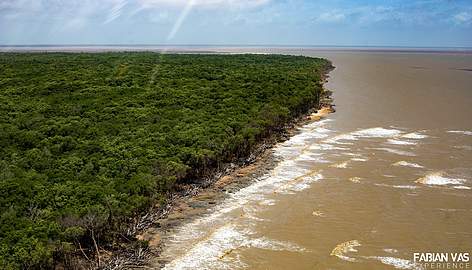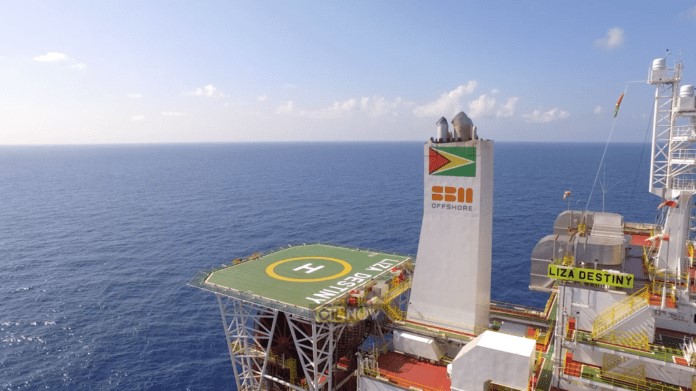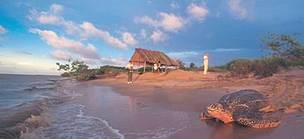
By Alicia Elias-Roberts
My inspiration for writing the article on Balancing Environmental Protection and Offshore Petroleum Developments in Guyana, which is published in the newly launched Global Energy Law and Sustainability journal, came about because I wanted to write about Guyana’s challenge to regulate the new petroleum sector and balance environmental protection.

I conducted legal research for the World Wildlife Fund (WWF) Guianas to assess the environmental laws in Guyana and provided a gap analysis of the laws which required amendment, repeal, etc. for the country to be in compliance with their obligations under a major environmental treaty, the Convention on Biological Diversity (CBD) and the Aichi targets for 2020. There are 20 Aichi targets. Several of the targets are have been achieved and others required more process for the State to fully comply. For instance, target 11 states that:
by 2020, at least 17 per cent of terrestrial and inland water areas and 10 per cent of coastal and marine areas, especially areas of particular importance for biodiversity and ecosystem services, are conserved through effectively and equitably managed, ecologically representative and well-connected systems of protected areas and other effective area-based conservation measures, and integrated into the wider landscape and seascape.
In the journal article I discuss some of the findings of that research. I also examine the government of Guyana’s Green State Development Strategy (GSDS) and several environmental law principles, such as sustainable development, polluter pay and precautionary principle which are relevant to the protection of the marine environment and biodiversity conservation. In the article I look at whether the movements towards development and energy exploitation are compatible with the environmental laws and principles. Several recommendations are made to highlight the relevant laws which should be updated for the State to fully comply with its international environmental legal obligations.

Guyana is a new frontier oil and gas country, with the first announcement of oil discovery in commercial quantities in May 2015. Guyana is situated on the northern coast of South America and has a population of approximately 700,000 persons. The country is approximately 215,000 square km in size, and of that land area, approximately 87% is covered by forest. Guyana is part of the Guiana Shield, a distinct eco-region of the larger Amazon Basin. The Guiana Shield alone has over 3000 vertebrate species made up of 2200 freshwater fish (32% endemic), 269 amphibians (54% endemic), 295 reptiles (29% endemic), 1,004 birds (7.7% endemic), and 282 mammals (11% endemics). Guyana is centrally positioned within the Guiana shield, containing much of its representative ecosystems and biodiversity, while still featuring many endangered Amazonian species. This biological richness is even more significant considering that the Amazon houses approximately 10% of the world’s known biodiversity and is the world’s largest remaining tract of tropical rainforest.
Guyana has a long, proud history of forest conservation. Kaieteur National Park was established in 1929 and was the first protected area in Amazonia. In 1989 Guyana offered to share the responsibility to manage the pristine million-acre Iwokrama Rainforest “in a manner that will lead to lasting ecological, economic and social benefits to the people of Guyana and to the world in general.” In 2016 President David Granger pledged to allocate two million hectares of land and waterways for conservation. Several government departments are working on the allocation and establishment of protected areas systems to provide legal protection in this regard. Guyana has maintained one of the lowest deforestation rates on Earth (peaking at 0.079% in 2012 and 0.065 % in 2014). Biodiversity plays a very important role to Guyana in maintaining the extensive forest cover of the country, the savannahs, and the various aquatic habitats. Biodiversity is valuable to ecosystems functions and is directly related to the livelihood of several communities in Guyana.
In light of the above the journal article discussed whether Guyana, through the GSDS, had set out the right balance regarding protection of the environment and sustainable management of offshore petroleum projects in line with the obligations under the CBD and the Aichi 2020 targets.
By Alicia Elias-Roberts
[1] Source: http://www.wwfguianas.org/our_work/areas_of_focus/oceans/integrated_coastal_zone_management/
[2] Source: https://oilnow.gy/featured/exxonmobil-earns-14-3b-in-2019-as-guyana-operations-enter-new-chapter/
[3] Source: http://www.wwfguianas.org/our_work/areas_of_focus/oceans/marine_wildlife/

Alicia Elias-Roberts teaches Oil and Gas Law and International Environmental Law at the University of the West Indies (UWI). She is the Deputy Dean in the Faculty of Law at the UWI St Augustine Campus in Trinidad and Tobago.
Global Energy Law and Sustainability is a new journal from Edinburgh University Press, dedicated to research in energy law on a global scale. The first issue is out now. Find out how to subscribe.







